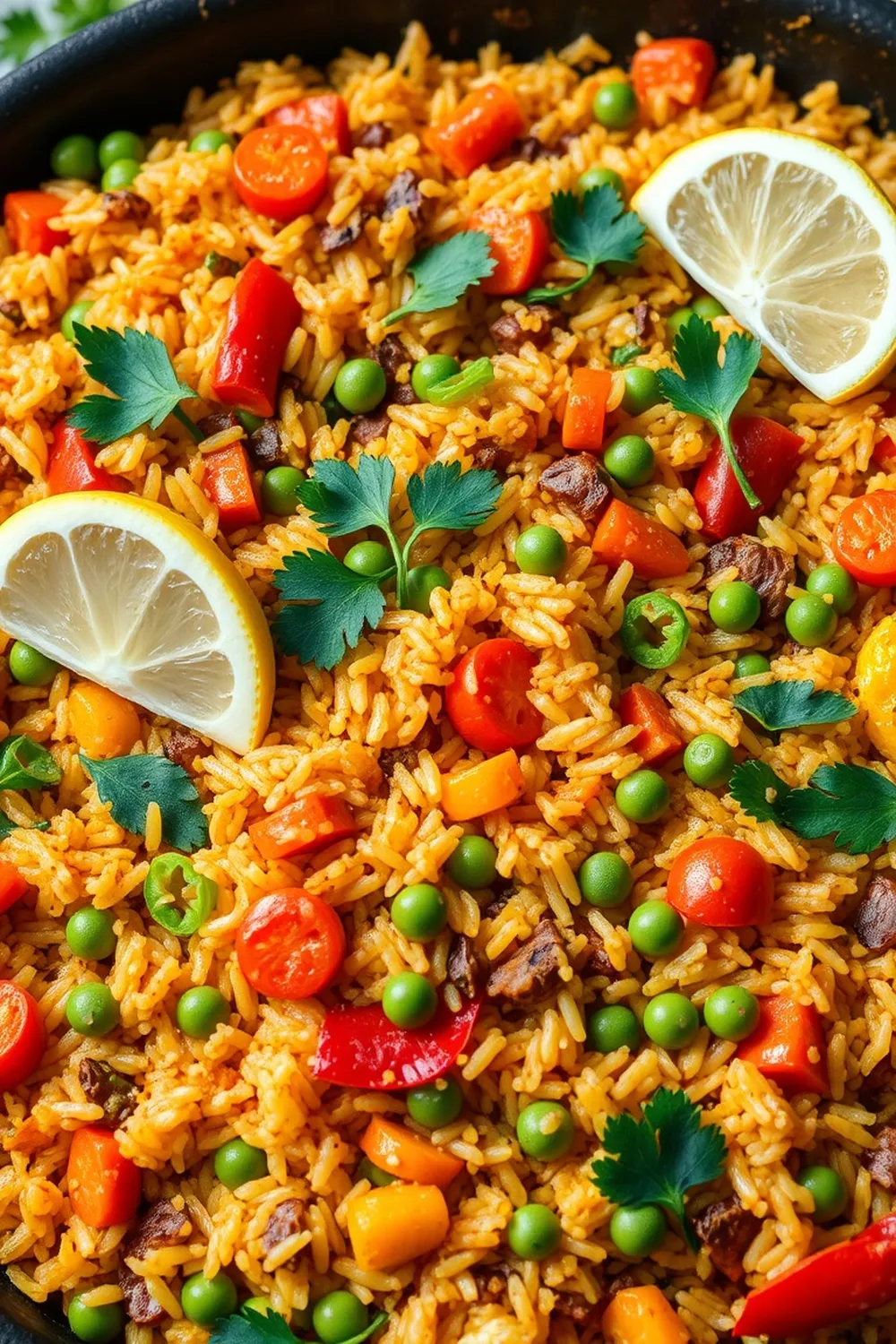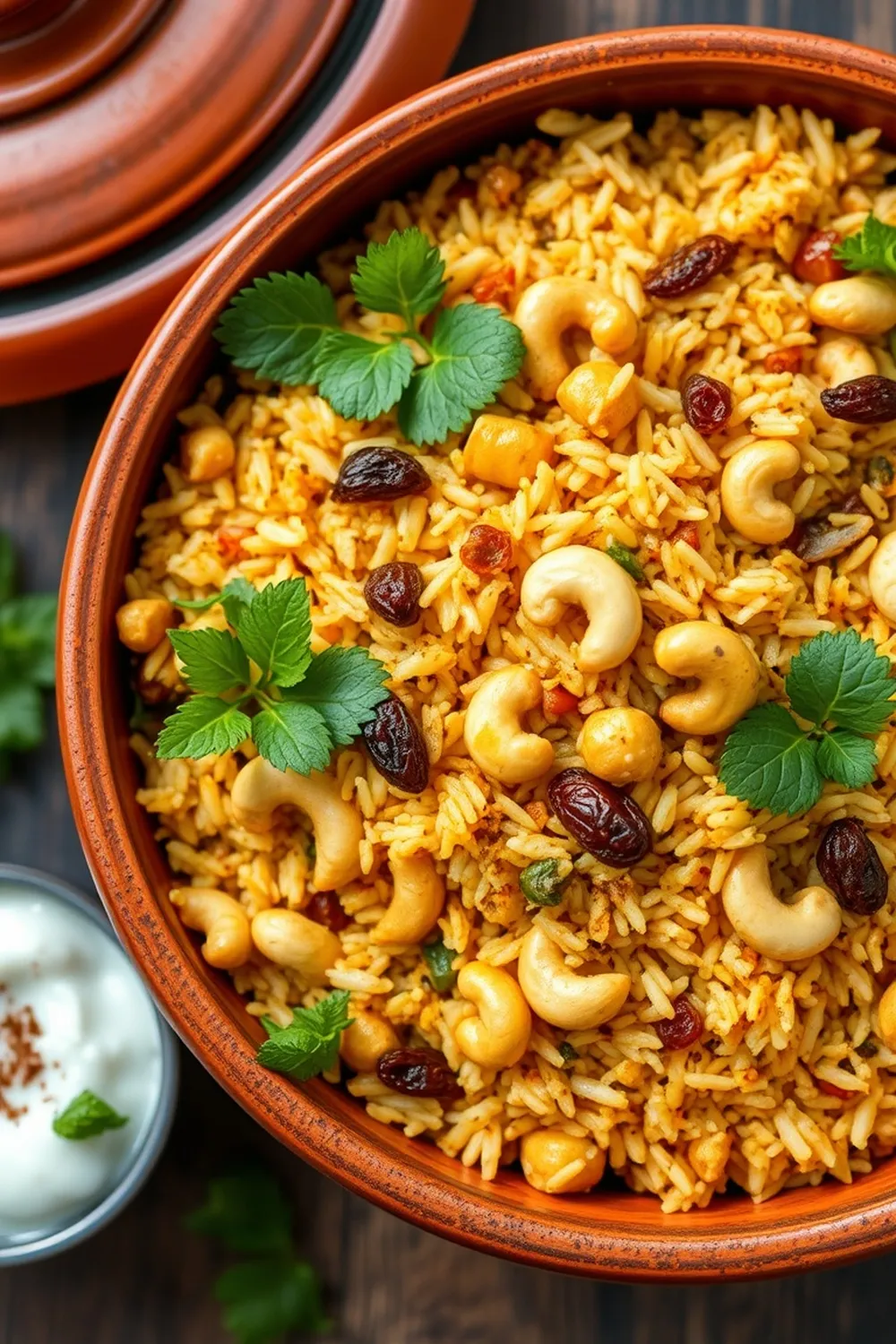- Heat coconut oil in a pan over medium heat. Add minced ginger and chopped onion; sauté for 1 minute.
- Add chopped red bell pepper, beans, and broccoli florets. Stir-fry for 3-4 minutes until slightly tender.
- Mix in Thai red curry paste and tomato paste until well combined with the vegetables.
- Pour 3-4 tablespoons of coconut milk into the pan. Cook for 2-3 minutes until the mixture thickens.
- Add the remaining coconut milk and simmer for 3-4 minutes to cook the vegetables while retaining their crunch.
- Gently stir in rice noodles and remove from heat. Let sit for 2 minutes to soften the noodles.
- Garnish with shredded purple cabbage, crushed peanuts, and fresh coriander leaves.
- Squeeze lime juice over the dish just before serving. Serve warm.
- Calories:350 kcal25%
- Energy:1464 kJ22%
- Protein:8 g28%
- Carbohydrates:45 mg40%
- Sugar:10 mg8%
- Salt:800 g25%
- Fat:18 g20%
Last Updated on 4 months by Neha Deshmukh
Thai Red Curry Noodle Soup Recipe – Coconut & Vegetable Delight
Introduction
Oh, this soup! It’s honestly one of my go-to recipes when I’m craving something warm, comforting, and packed with flavour. I first stumbled upon a version of this while travelling through Thailand, and I’ve been tweaking it ever since to get it just right. It’s a beautiful blend of Thai aromatics and fresh veggies, all swimming in a creamy coconut broth. And the best part? It comes together in under 30 minutes! Let’s dive in, shall we?
Why You’ll Love This Recipe
This Thai Red Curry Noodle Soup isn’t just delicious; it’s also incredibly versatile. It’s quick enough for a weeknight meal, impressive enough for a small gathering, and easily adaptable to your preferences. Plus, it’s a fantastic way to sneak in extra veggies! The combination of the spicy curry paste, sweet coconut milk, and crunchy vegetables is simply irresistible.
Ingredients
Here’s what you’ll need to create this flavour explosion:
- 1 tablespoon coconut oil
- 1 tablespoon fresh ginger, minced (adrak)
- ¼ cup Onion, finely chopped
- 1/5 cup Red bell pepper, chopped
- 1/5 cup Beans, chopped
- ¼ cup Broccoli, cut in small florets
- 2 tablespoons Thai red curry paste
- 1 tablespoon tomato paste
- 300 ml Coconut milk
- Rice Noodles (amount depends on package instructions – usually around 100-150g for 4 servings)
- ¼ cup Purple cabbage, for garnishing
- 2 tablespoons Crushed Peanuts, for garnishing
- Fresh coriander leaves, for garnishing
- Lime juice, to taste
Ingredient Notes
Let’s talk ingredients! A few little tips can make all the difference:
Coconut Oil: Exploring Varieties & Benefits
I prefer using virgin coconut oil for its lovely aroma, but refined coconut oil works just as well if you want a more neutral flavour.
Thai Red Curry Paste: Regional Differences & Spice Levels
Thai red curry paste can vary a lot in spice level depending on the brand and region it’s from. Start with 2 tablespoons and taste as you go – you can always add more!
Coconut Milk: Full-Fat vs. Light & Their Impact on Flavor
Full-fat coconut milk will give you the richest, creamiest soup. Light coconut milk works in a pinch, but the flavour won’t be quite as intense. I usually go for full-fat – it’s worth it!
Rice Noodles: Types & Cooking Considerations
Flat rice noodles are traditional, but vermicelli or even thin spaghetti can work if that’s what you have. Just be careful not to overcook them, as they’ll continue to soften in the hot broth.
Fresh Ginger (Adrak): Importance in Indian & Thai Cuisine
Fresh ginger is key! It adds a wonderful warmth and zing. Don’t substitute with ginger powder if you can avoid it. It’s a staple in both Indian and Thai cooking for a reason.
Step-By-Step Instructions
Alright, let’s get cooking!
- Heat the coconut oil in a pan over medium heat. Add the minced ginger and chopped onion and sauté for about a minute, until fragrant and softened.
- Now, toss in the chopped red bell pepper, beans, and broccoli florets. Stir-fry for 3-4 minutes, until they’re starting to get a little tender-crisp. We don’t want them mushy!
- Add the Thai red curry paste and tomato paste. Stir everything together really well, coating all the vegetables in that beautiful red hue. Cook for another minute to bloom the flavours.
- Pour in 3-4 tablespoons of coconut milk. Let it simmer for 2-3 minutes, stirring constantly, until the mixture starts to thicken slightly.
- Add the remaining coconut milk and bring to a gentle simmer. Cook for 3-4 minutes, allowing the vegetables to cook through while still retaining a bit of crunch.
- Gently stir in the rice noodles. Remove the pan from the heat and let it sit for 2 minutes, allowing the noodles to soften and absorb all those delicious flavours.
- Ladle the soup into bowls and garnish generously with shredded purple cabbage, crushed peanuts, and fresh coriander leaves.
- Finally, squeeze a little lime juice over each bowl just before serving. It brightens everything up beautifully! Serve warm and enjoy.
Expert Tips
- Don’t be afraid to taste and adjust the seasoning! A little fish sauce (if you’re not vegetarian) can add a lovely umami depth.
- If the soup gets too thick, add a splash of hot water or vegetable broth to thin it out.
- For a richer flavour, you can sauté the curry paste in the oil for a minute before adding the vegetables.
Variations
- Vegan Adaptation: This recipe is already pretty close to vegan! Just double-check your curry paste doesn’t contain any fish sauce or shrimp paste.
- Gluten-Free Adaptation: Most Thai red curry pastes are naturally gluten-free, but always check the label to be sure. Rice noodles are also gluten-free, so you’re good to go!
- Spice Level Adjustment (Mild, Medium, Hot): Start with 1 tablespoon of curry paste for mild, 2 for medium, and 3 or more for hot. You can also add a pinch of chili flakes for extra heat. My friend, Priya, loves to add a finely chopped bird’s eye chili for a real kick!
- Festival Adaptation (Buddhist Lent/Similar Occasions): This soup is often enjoyed during Buddhist Lent as a light and flavorful meal. It’s a great option for vegetarian offerings during this time.
Serving Suggestions
This soup is fantastic on its own, but you could also serve it with a side of steamed jasmine rice or a fresh spring roll. A sprinkle of extra crushed peanuts never hurts either!
Storage Instructions
Leftovers can be stored in an airtight container in the refrigerator for up to 3 days. The noodles will absorb some of the broth, so you might need to add a little water or coconut milk when reheating.
FAQs
What type of rice noodles work best in this soup?
Flat rice noodles are traditional, but any type will do! Just avoid overcooking them.
Can I make this soup ahead of time?
You can prepare the vegetable base ahead of time and store it in the fridge. Add the noodles just before serving.
How can I adjust the sweetness of the soup?
A tiny pinch of sugar or a drizzle of maple syrup can balance the spice.
What vegetables can I substitute if I don’t have the ones listed?
Feel free to use whatever veggies you have on hand! Carrots, mushrooms, spinach, and zucchini all work well.
Is Thai red curry paste naturally gluten-free?
Generally, yes, but always check the label.
How do I store leftover Thai red curry paste?
Store it in an airtight container in the refrigerator. It can also be frozen for longer storage.









